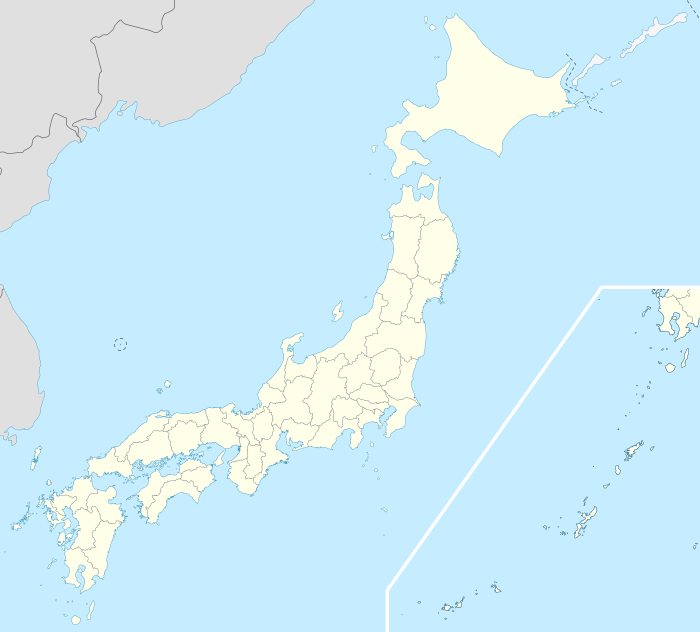Namie, Fukushima
| Namie 浪江町 | |||
|---|---|---|---|
| Town | |||
|
Namie Town Hall | |||
| |||
 Location of Namie in Fukushima Prefecture | |||
 Namie
| |||
| Coordinates: 37°29′49.5″N 141°00′2.6″E / 37.497083°N 141.000722°ECoordinates: 37°29′49.5″N 141°00′2.6″E / 37.497083°N 141.000722°E | |||
| Country | Japan | ||
| Region | Tōhoku | ||
| Prefecture | Fukushima | ||
| District | Futaba | ||
| Area | |||
| • Total | 223.10 km2 (86.14 sq mi) | ||
| Population (October 2016) | |||
| • Total | 0 | ||
| • Density | 0/km2 (0/sq mi) | ||
| Time zone | Japan Standard Time (UTC+9) | ||
| - Tree | Pine | ||
| - Flower | Cosmos (plant) | ||
| - Bird | Common gull | ||
| Phone number | 0243-62-0123 | ||
| Address | Kiyohashi Rokutanda 7-2, Namie-machi, Futaba-gun, Fukushima-ken 979-1592 | ||
| Website | Official website | ||
Namie (浪江町 Namie-machi) is a town in Futaba District, Fukushima, Japan. As of December 2014, the town had an official registered population of 18,386 and a population density of 82.4 persons per km². The total area was 223.10 square kilometres (86.14 sq mi).[1]
Geography
Namie is located on the Pacific Ocean coastline of central Fukushima.
Surrounding municipalities
- Fukushima Prefecture
History
The area of present-day Namie was part of Mutsu Province. The remains of Kofun period burial mounds have been found in the area. During the Nara period, it was the center of ancient Futaba District within Iwaki Province During the Edo period, it was originally part of Sōma Domain, ruled by the Sōma clan until the Meiji restoration. On April 1, 1889, the village of Namie was created within Naraha District, Fukushima, which subsequently became Futaba District in April 1896. Namie was raised to town status on March 1, 1900. The town expanded on May 1, 1956 by annexing the neighboring villages of Obori, Karino and Tsushima.
2011 Tōhoku earthquake and tsunami

Namie was severely affected by the Fukushima Daiichi nuclear disaster, and the 2011 Tōhoku earthquake and tsunami on March 11, 2011.[2] Besides sustaining considerable damage from the earthquake, and the tsunami (which devastated the coastal area), the town was evacuated en masse on the morning of March 12 as it is located well within the 20 kilometer exclusion radius around the damaged Fukushima Daiichi nuclear power plant. It was not searched for bodies until more than one month after the tsunami.
On 15 April 2012, the city of Namie asked the Japanese government for free health-care for its residents. To monitor the long-term health the city would provide to all inhabitants health handbooks, in order to keep a thorough record of all health checks and thyroid examinations. The health books were made like the books used to monitor the health of the atomic bomb survivors in Hiroshima and Nagasaki. These "hibakusha" health books were free from medical fees, and Namie asked the government to set up a similar program for the people in Namie. Of the seven other cities around the nuclear plant, Futaba town was also willing to take part in this program.[3]
In April 2012, the government of the evacuated city of Namie bought a whole-body dosimeter. The device was installed in a temporary housing in Nihonmatsu, Fukushima, in order to monitor the internal radiation exposure and the health of the citizens of Namie. Some 50 people a day could be examined, a complete screening would take two minutes per person. Initial screenings of the whole population was planned to be finished at the end of the fiscal year 2012. In this way the government of Namie wanted to offer a long-term monitoring program to the population. Another reason for this, was the excessive exposure to radiation during the first days directly after the nuclear disaster in March 2011, when predictions from SPEEDY were ignored by the Fukushima Prefectural government.[4]
On April 1, 2013, the nuclear evacuation zone in Namie was revised. Japanese authorities decided to set three different zones according to different levels of radiation.[5]
2016 earthquake
A 6.9 magnitude earthquake struck off the coast of Namie in the early morning hours of November 22, 2016.[6] A tsunami warning was issued indicating waves of up to three meters.[7]
Economy
The economy of Namie was dependent on commercial fishing, agriculture and food processing.
Education
Namie had two high schools, three middle schools and six elementary schools.
Transportation
Rail
Highways
- Jōban Expressway – Namie IC
- National Route 6
- National Route 114
- National Route 259
- National Route 399
Local attractions
- Sōma ware ceramics
References
- ↑ "Namie official home page" (in Japanese). Japan: Namie Town.
- ↑ Kyodo News, "Death toll may surpass 10,000 in Miyagi", Japan Times, 14 March 2011, p. 1.
- ↑ The Japan Times (15 April 2012) Namie to seek medical fee exemption for all residents
- ↑ The Mainichi Shimbun (26 April 2012) Evacuated Fukushima town sets up whole-body dosimeter at temporary housing complex
- ↑ Hongo, Jun "Fukushima debris disposal falling short", The Japan Times, May 7, 2013.
- ↑ "M6.9 - 37km ESE of Namie, Japan". United States Geological Survey. November 22, 2016. Retrieved November 22, 2016.
- ↑ "Magnitude-6.9 Earthquake Hits Off Japan Coast; Tsunami Wave Spotted, Public Urged to Evacuate". KTLA. November 21, 2016. Retrieved November 21, 2016.
External links
| Wikimedia Commons has media related to Namie, Fukushima. |
| Wikiquote has quotations related to: Namie, Fukushima |
- Official website (Japanese)

